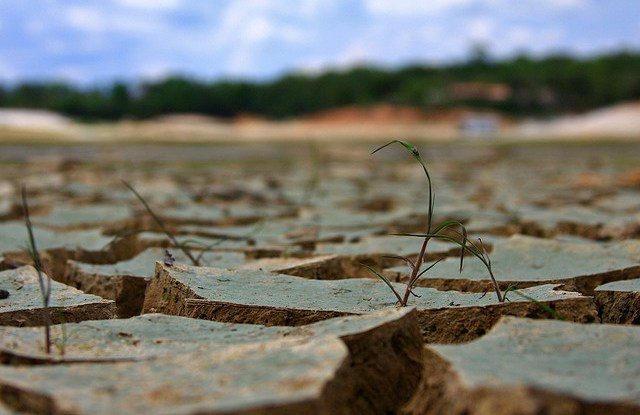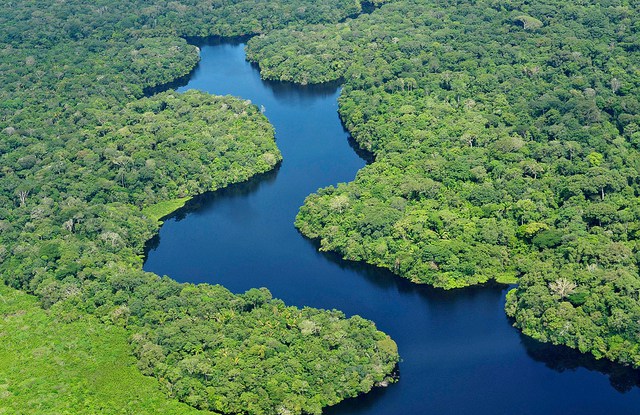At the COP21 in Paris last year, 195 countries reached an historic agreement – the first ever universal, legally binding global climate deal.
Yet while each country made emission-cutting pledges, the pledges remain on the whole inadequate to date, potentially putting the world on a dangerous path towards global warming by 3 degrees Celsius.
Currently, 89 countries have ratified the Paris Agreement, which entered into force on 4 November. Only three days later, the 22nd session of the Conference of the Parties (COP22) in Marrakesh, Morocco will begin on 7 November.
It’s time to roll up our collective sleeves and get to work on the implementation of the Agreement.
TOP 10 THINGS TO WATCH OUT FOR AT COP22:
- Land Sector and the 1.5 degree goal:
The land sector will play a very significant role in limiting global average temperature increase to well below 2° or 1.5oC as agreed in the Paris Agreement. This sector is the second largest contributor to climate change according to the IPCC.
Restoring degraded ecosystems and reforestation can make a major contribution and it will be important to prioritise emphasis on these low hanging fruit rather than over-dependence on unproven technological solutions. At the forefront of priorities however, should be removal of fossil fuel subsidies and the phasing out of fossil fuels by at least mid-century.
A key point for COP22 negotiators will be to explore how this will be achieved by developed nations and how to financially support less developed countries, particularly in regards to the development of the 100 billion Road Map.
The special report being prepared by the IPCC on 1.5 degrees should inform the negotiations and provide new guidance in coming years. It will be crucial for the role of the land sector and forests to make up a major part of this work.
- REDD+:
REDD+ is intended to reward developing countries for their verified efforts to reduce emissions and enhance the removal of greenhouse gases through a variety of forest management options. The Green Climate Fund (GCF), which supports developing countries to reduce GHG emissions and to adapt to climate change, is working to finalize its policy so that it can make results-based payments for REDD+.
A process has recently been put in place and a decision is expected on the topic at the next GCF Board meeting in December. One ongoing contentious topic concerning REDD+ relates to the use of forest carbon offsets.
Experts continue to argue that forest offsets do not reduce emissions from fossil fuels. This is an issue that is unresolved up until now in multiple forums including the GCF and the International Civil Aviation Organisation. Allowing forest offsets delays the much-needed phasing out of fossil fuels, so we can expect discussions on this topic in Marrakesh and beyond.
- Agriculture:
Agriculture is responsible for around eight per cent of global greenhouse gas emissions. But agriculture remains a sensitive and complex issue, especially for developing countries where food security is a major concern.
Agricultural expansion has led to environmental degradation and loss of forests, especially in tropical countries. Climate changes have already impacted many staple crops and impacted the beef and cattle sector, which is the mainstay for many communities.
These issues, if not addressed justly, will lead to increased hunger and malnutrition among the most vulnerable populations living in Africa, Asia and Central America. The Agriculture work plan that was established by the SBSTA in 2014 has now been completed and in Marrakesh, its next steps will be determined.
These could include a new work program focused on how to ensure food security in a changing climate, as well as work programs on the enhanced understanding of indigenous and traditional practices.
- Enhancing Transparency:
Article 13 of the Paris Agreement established an enhanced transparency framework. During COP22, negotiators will continue to develop the modalities and guidelines to implement it. A number of submissions have already been received from countries on this topic. There is a need to analyse the way monitoring, measuring, reporting and verification is approached.
Climate action is about more than just carbon, as should be the system of transparency. It will be important that human rights and social and environmental implications of all actions taken are included in the enhanced transparency system.
This extends to actions taken by the corporate sector, otherwise known as “non-state actors”. Efforts to mitigate climate change could have severe social consequences and at present, apart from the REDD+ Cancun Safeguards, there are no broadly applied safeguards within the UNFCCC against these possible impacts.
- Corporate Pledges and Zero Deforestation:
Companies like SC Johnson, Unilever and McDonald’s have all committed to zero deforestation supply chains. But how can this be achieved when raw materials are sourced from remote parts of the world, by companies that cross multiple borders? What mechanisms are currently in place to ensure monitoring activities are accurate? How do we ensure transparency and what reporting guidelines will be used in all these countries?
The UNFCCC’s Climate Action Agenda and Non State Actor Platforms have advanced this discussion significantly. COP22 provides the opportunities to look more closely and cound develop guidelines on how corporate actions may relate to the NDCs, the Enhanced Transparency Framework and the Global Stocktake, as well as the growing role of non-state actors in climate negotiations.
- Ecosystems:
Article 5 of the Paris Agreement states that parties are required to take action to conserve and enhance natural ecosystems. Meanwhile, the Preamble notes the importance of ensuring the integrity of all ecosystems, including oceans, and the protection of biodiversity.
The role of ecosystems and the importance of biodiversity is often understated, or ignored in the UNFCCC negotiations. However, the provisions mentioned throughout the text that require the need for environmental integrity in the NDCs (Article 4) and the Sustainable Development Mechanism (Article 6) should pave the way for further emphasis on climate, ecosystems integrity and biodiversity considerations.
What’s more, the Convention on Biological Diversity has recently released an important report that identifies climate change’s impact on biodiversity. It warns that geo-engineering technological solutions being proposed are also likely to have further negative impacts on biodiversity through land use change, a serious issue that should not be ignored.
- Coastal Ecosystems and Blue Carbon:
Coastal and marine ecosystems, in particular mangroves, are a key piece in the climate change puzzle, storing significant amounts of “blue” carbon from the oceans and the atmosphere. According to the Blue Carbon Initiative, coastal habitats account for about half of the total carbon sequestered in ocean sediments.
As the world’s largest archipelago, Indonesia’s coastal blue carbon holds great potential for climate change mitigation if unsustainable economic development is checked. But how can this be achieved? What financial incentives should be taken into account? Restoration and protection of mangrove ecosystems could play a more important role in terms of pre-2020 mitigation potential, a matter that the UNFCCC and the GCF should consider.
- Operationalizing Rights:
Climate change is widely recognized as a human rights issue. For this reason, human rights, rights of indigenous peoples and gender have all been included in the preamble to the Paris Agreement.
Gender and indigenous peoples considerations are also included in the sections on Adaptation (Article 7) and Capacity Building (Article 11). Significant efforts to ensure women are not left behind have been made within the Green Climate Fund, which has a comprehensive gender policy and a gender action plan in place to help ensure that women, particularly those from developing countries, are included.
But unfortunately, no such progress has yet been made concerning indigenous peoples policies at the GCF. Ways to bring women and indigenous peoples into the process as equal stakeholders when projects are designed and ways to provide resources on the ground to implement them need to be identified. A broader human rights agenda needs to be operationalized. This long overdue work should commence in Marrakesh.
- Technology:
Technology is consistently high on the list of priorities to address climate change as it increases both accessibility and affordability. Tried and tested energy sources like wind and solar, as well as satellite and computer systems that track and map fires, deforestation and climate changes, are helping nations to meet their pledges.
But not all technology is created equally. For example, arguments both for and against investments in carbon capture and storage (CCS) are on the rise, and risks associated with geo-engineering have been raised. Both technologies will have significant impacts on land use, biodiversity, people and food security depending upon the level of their deployment.
It will be necessary for the provisions of the Paris Agreement, which establish the Technology Framework (Article 10), to enhance action on technologies and in doing so, ensure that such technologies are socially and environmentally sound. It is likely that the Climate Technology Centre and Network (CTCN) and the GCF will play an increasingly important role on this topic and should refrain from any investments in technologies that could undermine the global goal on adaptation (Article 7) to increase resilience and decrease vulnerability.
- Accounting:
Last, but not least, is land use accounting. Without measuring sinks and sources, it is impossible to know whether we are on track to achieve the Paris Agreement objectives. This subject is particularly complicated when it comes to land use. These complexities leave many negotiators at a disadvantage on the topic.
Experts agree that a good accounting system must be transparent, accurate, verifiable and efficient. As work is undertaken to put in place a new land use accounting system, it will be important that countries work towards comprehensive accounting and close existing loopholes. A system that clearly shows emissions from the land sector will be important and complexities associated with international trade of biomass to ensure its inclusion in land use accounting methodologies will need to be addressed.
It is clear that participants at COP22 will have their hands full as they hammer out the “how to” aspects of the Paris Agreement. Implementation has been the buzzword since the Agreement was reached, but we are now faced with a new challenge resulting from the record time in which ratification occurred.
FROM IMPLEMENTATION TO TRANSFORMATION
It is clear that participants at COP22 will have their hands full as they hammer out the “how to” aspects of the Paris Agreement. Implementation has been the buzzword since the Agreement was reached, but we are now faced with a new challenge resulting from the record time in which ratification occurred.
There remains much technical work to be done to ensure the Paris Agreement is implemented in a way that truly ensures the necessary transition of the global economy. We should hope that the rush to implement does not undermine the transformational potential of the Agreement and weaken the ‘rule book’ under development.
COP22 is the first COP since Paris. There is great uncertainty in regards to the way the politics will play out, especially with a US election happening during the first week. One thing we know for sure is that we already hold the answers to many climate needs and solutions. The greatest risk now to achieving the necessary transformational change are the forces, the vested interests and the actors that drive and influence the political agenda.
We want you to share Forests News content, which is licensed under Creative Commons Attribution-NonCommercial-ShareAlike 4.0 International (CC BY-NC-SA 4.0). This means you are free to redistribute our material for non-commercial purposes. All we ask is that you give Forests News appropriate credit and link to the original Forests News content, indicate if changes were made, and distribute your contributions under the same Creative Commons license. You must notify Forests News if you repost, reprint or reuse our materials by contacting forestsnews@cifor-icraf.org.

